In most cases, the recommended Lexus RX 350 tire pressure is 33 psi for all four tires. Confirm your car’s tire pressure by checking the owner’s manual or driver’s side door jamb.
Maintaining the correct tire pressure is an important part of keeping your car safe on the road. Tires that are underinflated or overinflated can increase wear and tear, affect driving performance, and increase the risk of a blowout.
Jerry
, the
car insurance
comparison app, has put together this essential guide to Lexus RX 350 tire pressure. We are committed to helping people stay safe on the road with the best car insurance and by helping you understand car maintenance. Stick around to find out how you can lower your
Lexus RX 350 insurance cost
, too.
RECOMMENDED
No spam or unwanted phone calls · No long forms · No fees, ever
ZIP Code
ZIP Code
Find insurance savings (100% Free)
What is the right tire pressure for a Lexus RX 350?
In most cases, the recommended tire pressure for a Lexus RX 350 is 33 psi for both front and rear tires. You should confirm the exact recommendation for your model though by checking the owner’s manual or driver’s side door jamb.
The recommended tire pressure has changed slightly over the years. 33 psi has been the recommended pressure since 2016. From 2010 to 2015 the recommended pressure was 32 psi, and pre-2010 models typically have a recommended tire pressure of 30 psi.
This number can vary a bit as well depending on which size tires are on your Lexus. All pressure recommendations are within a few psi, but over-inflating your tires by as little as 3 to 5 psi can increase your risk of a blowout. That’s why it’s so important to get it right and to confirm the tire pressure needed for your exact situation.
Things are complicated a bit more in the winter. If you live somewhere with cold, snowy winters, it is usually a good idea to inflate your winter tires 3 to 5 psi above the manufacturer’s recommendations.
Tire pressure recommendations for other Lexus vehicles

ZIP Code
ZIP Code
Find Savings!
No long forms. No spam calls. Free Quotes.
4.7/5 App Store Rating, 8,100+ Reviews
Trusted by 1.5+ Million Customers.
How to check Lexus RX 350 tire pressure
If you don’t know how to check your tire pressure, don’t worry, it’s pretty straightforward. You will need a
tire pressure gauge
, though. If you don’t have one, gas station air fill stations usually have a pressure gauge built into the air pumps.
The first thing you should know is that to get the most accurate pressure reading, your tires should be cold—wait at least an hour after driving before you take your measurement.
To check your tire pressure, just remove the tire valve stem cap and push the tire pressure gauge over the valve stem. The gauge will give you a reading which you can use to add or remove air as needed.
How often should you check tire pressure?
It’s recommended to check your tire pressure regularly. The best practice is to check your Lexus RX 350’s tire pressure once a month or before any especially long drives.
You should also check your tire pressure whenever you have reason to believe a tire is getting low. If your pressure is low, you might notice your TPMS light turn on. You might also notice it in the way your car drives. Things like decreased performance, an uneven feeling ride, or strange steering are all signs that one or more tires are low.
How to tell if your Lexus RX 350 needs new tires
The average tire will last roughly 50,000 to 60,000 miles. Based on average driving habits, this amounts to about three to five years. Get in the habit of checking your tires. If you notice low tread depth, odd cracks, or bulges in the tire, it’s time to replace it.
Most tires should be retired when they reach a tread depth of about 1/16”.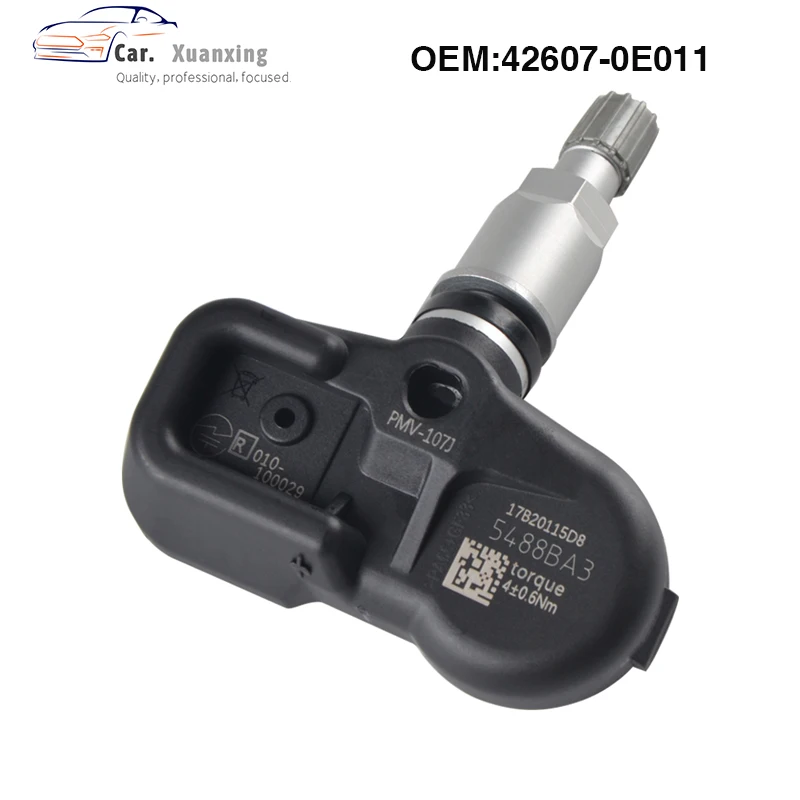 A handy trick to assess this depth is to use a penny. Insert a penny between your tread leading with the top of Lincoln’s head. If you can see the top of the 16th president's head, then your tread is too low.
A handy trick to assess this depth is to use a penny. Insert a penny between your tread leading with the top of Lincoln’s head. If you can see the top of the 16th president's head, then your tread is too low.
How to reset the Lexus RX 350 tire pressure monitoring system (TPMS) light
The tire pressure monitoring system (TPMS) is a handy tool to help keep your tires at the correct pressure. Sometimes, after you’ve checked and refilled all of your tires to the recommended pressure, the TPMS light will remain lit.
Thankfully, there is a super simple way to reset this light on a Lexus RX 350, but the process is a bit different depending on the year your Lexus was made.
For models made before 2016:
With the car turned off, make sure all four tires are at the correct cold pressure.
Turn the car on (but don’t start the engine) and locate the TPMS reset button. This should be located next to the steering wheel and say “set”.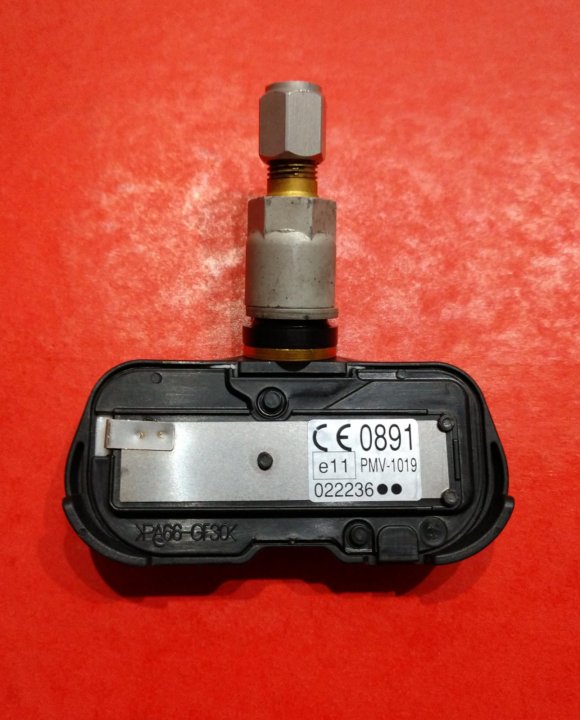
Hold down the TPMS reset button until the light flashes a few times.
Leave your car on for a few minutes to allow the system to recalibrate.
For models made since 2016:
With the car off, adjust all four tires to the correct tire pressure.
Turn the car on without starting the engine.
In your dash display system, go to the “vehicle settings” menu using the navigation buttons and press and hold the “OK” button.
Select TPMS.
Press and hold the OK button for a few seconds until the light blinks three times.
Start your engine and drive for 30 miles to allow the system to calibrate.
If this doesn’t fix the problem, stop the car, turn the engine off, and turn the car on again. The TPMS light should stay off, but if it starts blinking again within 60 seconds, repeat the driving step.
If none of this works, you may have an issue with one of the sensors and it might be worth taking your Lexus to a dealership or local mechanic to properly diagnose the problem.
How to save on Lexus car insurance
Now that you have a better understanding of your Lexus RX 350 tire pressure, why not learn about a better way to save on your
Lexus insurance rate
?
The best way to save on
car insurance
is to compare as many policies as possible until you find the absolute best rate.
Jerry
is designed exactly for that purpose. Jerry is partnered with over 50 top insurance providers, allowing you to compare more policies than ever before in less than a minute.
All you have to do is fill out the signup form, and the app makes the rest a breeze. In less than a minute, you’ll be presented with a tailored list of free quotes with the best rates, so you don’t have to sort through over 50 policies. Once you choose the policy you want, you can even fill out all of the necessary paperwork in no time through the app.
If you aren’t sure whether it's worth the time, consider this. Jerry users can find and sign up for a new policy in less than 30 minutes, and the average savings amount to over $800 per year!
“I was paying $500 a month for insurance, and I needed help.
Jerry
canceled my previous plan and found me a $342 plan through Infinity. Jerry, you are awesome!” —Hans M.
Compare insurance quotes from 50+ carriers with Jerry in under 45 seconds
ZIP Code
ZIP Code
Find Savings!
Find Savings!
4.7/5 App Store Rating. Trusted by 2+ Million Customers.
SUBJECT VEHICLES: Lexus RX 350 (2016-19), RX 350L (2019), RX 450h (2016-19) and RX 450hL (2019).
SPECIAL TOOLS NEEDED? Yes, a Toyota Techstream.
NOTE: The tire pressure monitoring system (TPMS) will need to be initialized when tires are rotated; tires are replaced with tires of different pressures; tire pressure sensor and/or tire pressure monitor engine control unit (ECU) are replaced. Set tire pressure within the specified range before initializing. When a tire pressure sensor and/or tire pressure monitor ECU are replaced, the sensor ID must be memorized by the tire pressure monitor ECU prior to system initialization. See “Reset procedures.”
Set tire pressure within the specified range before initializing. When a tire pressure sensor and/or tire pressure monitor ECU are replaced, the sensor ID must be memorized by the tire pressure monitor ECU prior to system initialization. See “Reset procedures.”
NOTE: Initialization is NOT required if re-inflating tires to the specified tire pressure.
In Lexus RX Series vehicles (2016-2019), a tire pressure warning valve and transmitter (equipped with a tire pressure sensor and a transmitter) is installed in each tire and wheel assembly. The sensor measures the tire pressure, and the measured value and transmitter ID are transmitted to the tire pressure monitor antenna on the body as radio waves. These radio waves are then sent to the tire pressure monitor ECU from the tire pressure monitor receiver. If the transmitter ID has already been registered, the ECU compares the measured air pressure value with the standard value. When the value is less than the standard value registered in the tire pressure monitor ECU, the warning light on the instrument cluster comes on and a warning message will be shown on the multi-information display.
CAUTION: The warning system may not activate immediately if bursts or sudden air leakage should occur. The tire pressure warning reset switch is used to address the differences in the air pressure settings by the type of tires, or the differences in pressure between the front and rear tires. This switch is used to initialize the warning system after certain repair procedures.
Under the following conditions, the system may not function properly:
If other wheels than the specified ones are used, the system may not function properly because the radio waves are differently transmitted from the sensor. Depending on the tire type, the system may not function properly even though the specified wheels are used.
Depending on the tire type, the system may not function properly even though the specified wheels are used.
Tire pressure monitor warning indicators
NOTE: The tire pressure warning light may turn on due to natural causes such as natural air leaks or tire pressure changes caused by temperature. In this case, adjusting the tire pressure will turn off the warning light.
When the tire pressure warning light and message do not go off, or when they come on during driving, check tire pressure and adjust as necessary. Warning indicators should turn off a few minutes after air is put into a deflated tire. If the warning indicators are still on even though the tire pressure is correctly adjusted, the tire could be punctured. Repair as necessary. If the tire pressure warning indicators come on within several hours after adjusting the tire pressure, the tire may have a slow air leak. If the warning light is still on or blinking, there is a malfunction in the TPMS.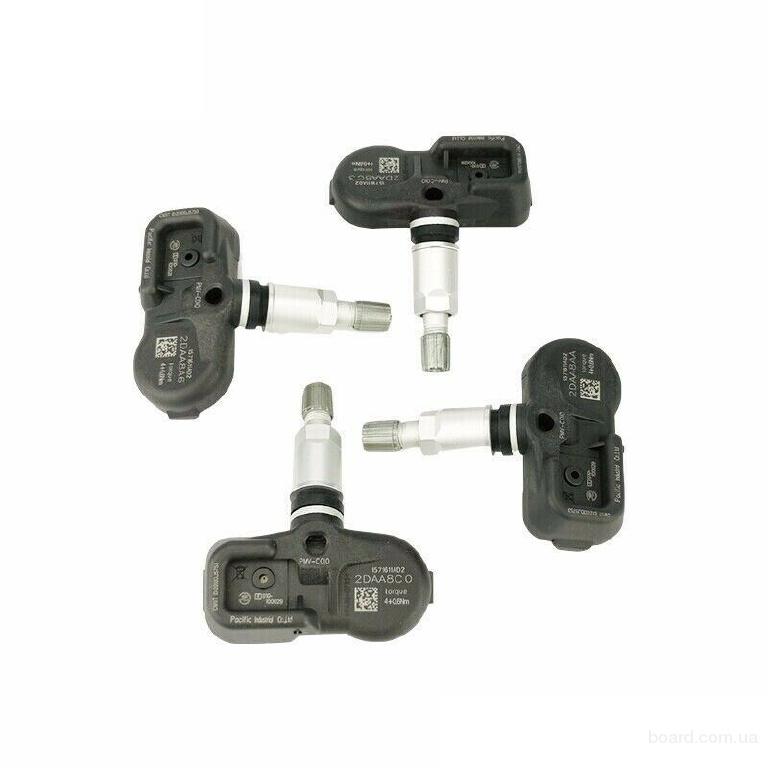 See appropriate manufacturer service information.
See appropriate manufacturer service information.
Reset procedures
NOTE: The system will need to be initialized when tires are rotated; tires are replaced with tires of different pressures; tire pressure sensor and/or tire pressure monitor ECU are replaced; or when a new vehicle is delivered. Set tire pressure within the specified range before initializing. See “Initializing tire pressure monitor system.” When a tire pressure sensor and/or tire pressure monitor
ECU are replaced, the sensor ID must be memorized by the tire pressure monitor ECU prior to system initialization. See “Tire pressure sensor registration.” TPMS reset is not required if re-inflating tires to the specified pressure. Warning indicators should turn off a few minutes after air is put into a deflated tire.
Initializing the TPMS
NOTE: When initializing the system, the present tire condition is stored as a standard.
During initialization, the tire pressure warning valve and transmitter measures the inflation pressure of the tires, and registers the signals that are transmitted into the tire pressure monitor ECU at a frequency of one per minute. The initialization process is completed when the signals from the tires (including the spare tire) have been received.
The initialization process is completed when the signals from the tires (including the spare tire) have been received.
1) Set the tire pressure of all the wheels to the pressure specified on the tire and loading information label.
2) With the vehicle stopped and parking brake applied, turn the engine switch on (IG).
3) Use the Lft/Rht ARROW buttons on the right-hand steering wheel control pad (see Figure 1) and select the GEAR icon.
4) Use the Up/Dwn ARROW buttons and select VEHICLE SETTINGS. Then press ENTER (center button).
NOTE: “- -” will be displayed for inflation pressure of each tire on the multi-information display while the tire pressure warning system determines the position of each tire. When the position of each tire is determined, the inflation pressure of each tire will be displayed on the multi-information display.
5) Use the Up/Dwn ARROW buttons and select TPMS. Then press and hold ENTER until the tire pressure warning light will blink slowly 3 times.
6) Drive the vehicle at approximately 25 mph (40 km/h) or more for approximately 10 to 30 minutes until the inflation pressure of each tire is displayed on the multi-information display.pressure sensor registration.NOTE: If the tire pressure sensor and/or tire pressure monitor ECU are replaced, the transmitter ID needs to be registered in the tire pressure monitor ECU prior to system initialization. To perform this procedure, the Toyota Techstream must be used. It is not necessary to register the sensor IDs when only tire rotation is performed. NOTE: Take note of the 7-digit number (transmitter ID) written on the tire pressure warning valve and transmitter (see Figure 2).
1) Set the tire pressure of all wheels to pressure specified on the tire and loading information label.
2) Connect the Techstream to DLC3.
3) Turn the engine switch on (IG).
4) Enter the following menus: Chassis / Tire Pressure Monitor / Utility / ID Registration.
NOTE: If the system is in the initialization mode, it is unable to perform registration. Therefore, restart the registration after terminating the initialization or confirming that the initialization has been completed.
Therefore, restart the registration after terminating the initialization or confirming that the initialization has been completed.
5) Perform the procedures displayed on the Techstream.
6) Confirm the transmitter ID registration by entering the following menus: Chassis / Tire Pressure Monitor / Data List.
7) Read the “ID Tire Inflation Pressure” values.
8) Confirm that the tire pressure data of all tires (including the spare tire) is displayed on the Techstream screen.
9) Disconnect the Techstream with the ignition switch off.
Demounting/mounting procedures
CAUTION: The tire should be demounted from the wheel using the tire changer manufacturer’s instructions. Use the following information to avoid damage during the demounting/mounting procedures.
NOTE: The system will need to be initialized when tires are rotated; tires are replaced with tires of different pressures; tire pressure sensor and/or tire pressure monitor ECU are replaced.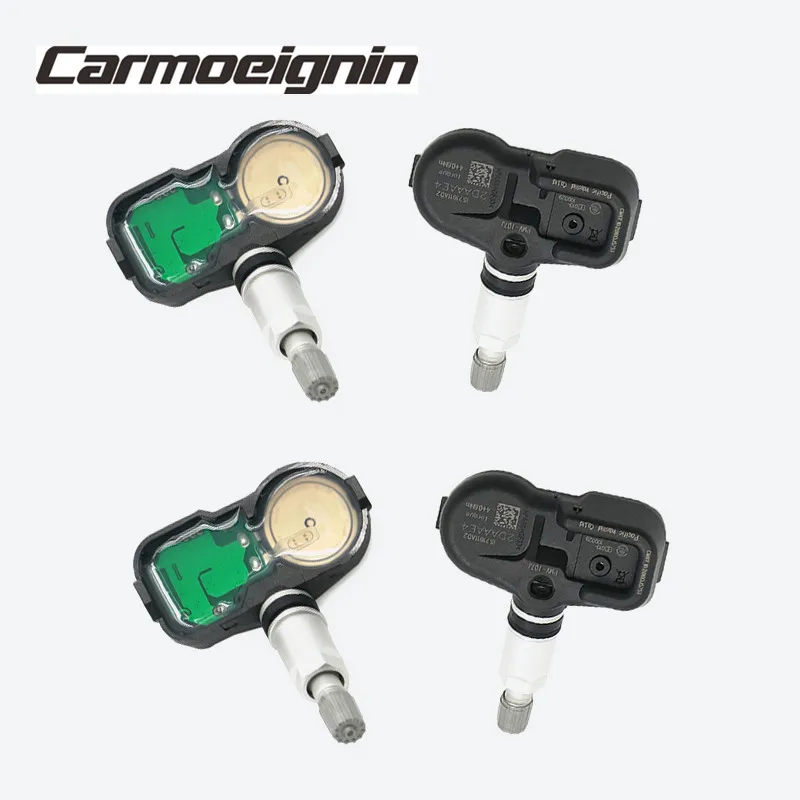 Set tire pressure within the specified range before initializing. When a tire pressure sensor and/or tire pressure monitor ECU is replaced, the sensor ID must be memorized by the tire pressure monitor ECU prior to system initialization. See “Reset procedures.”
Set tire pressure within the specified range before initializing. When a tire pressure sensor and/or tire pressure monitor ECU is replaced, the sensor ID must be memorized by the tire pressure monitor ECU prior to system initialization. See “Reset procedures.”
Tire pressure sensor
CAUTION: DO NOT try to install a tire pressure sensor in a steel wheel or aftermarket wheel. Use only in original style factory wheels. CAUTION: The use of tire sealants is strictly prohibited for vehicles equipped with a TPMS. Tire sealants can clog tire pressure sensors.
NOTE: The average life of the grommet of the tire pressure warning valve and transmitter is approximately 5 years, at which time it must be replaced. If the valve is leaking air, is less than 5 years old and there is no problem with grommets, retighten the valve nut to 35 in.-lbs. (4 N.m). Whenever the tires must be replaced, replace the grommets for the tire pressure sensors as well.
NOTE: If the tire pressure warning valve and transmitter is going to be replaced, make a note of the 7-digit number (transmitter ID) before installation, as it cannot be seen after sensor is installed (see Figure 2). Whenever a new sensor is installed, it will need to be registered in the tire pressure monitor ECU.Removal
Whenever a new sensor is installed, it will need to be registered in the tire pressure monitor ECU.Removal
1) When replacing a wheel or tire, the tire pressure sensors must be set up in one of the following ways:
2) Remove the wheel. Remove the valve core and cap, and release air from the tire (see Figure 3) . NOTE: Keep the removed cap and valve core.
3) After ensuring that air is sufficiently released, remove the nut and washer that is used to secure the tire pressure warning valve and transmitter and drop the sensor inside the tire. NOTE: Be careful not to damage the tire pressure warning valve and transmitter due to interference between the sensor and tire bead.4) After dropping the tire pressure warning valve and transmitter into the tire, disengage the bead using the shoe of the tire remover (see Figure. 4).
4).
5) Remove the bead on the upper side in the usual operation.
6) Remove the tire pressure warning valve and transmitter from the tire, and remove the bead on the lower side as in usual operation. NOTE: The tire pressure warning valve and transmitter is powered by a lithium battery. When disposing, remove the battery and dispose of it properly.
7) Remove and discard the inner grommet from the tire pressure warning valve and transmitter.
Installation
1) Insert the tire pressure warning valve and transmitter into the valve installation hole. Insert from the inside of the rim so that the print surface can be seen (see Figure 2).
Check for the following:

2) Install the washer on the valve and transmitter from the rim side, and tighten the nut to 35 in.-lbs. (4 N.m) (see Figure 5). Check for the following:
Increase the likelihood of profitability and success by partnering with the right tire manufacturer.
DOWNLOAD FREE EBOOK
3) After the tire is inflated, the valve nut may be loose. Retighten the nut to the specified torque, and then check for air leaks with soapy water. CAUTION: If the sensor is positioned outside this area, it generates interference with the tire bead, causing possible damage to the sensor.
Retighten the nut to the specified torque, and then check for air leaks with soapy water. CAUTION: If the sensor is positioned outside this area, it generates interference with the tire bead, causing possible damage to the sensor.
4) Set the wheel disc to the mounting machine, and install the lower tire bead. Position the main body of the sensor in the shaded area as shown in the illustration (see Figure 6).5) Making sure that the tire bead and tool do not interfere with the main body of the sensor and that the sensor is not clamped by the bead, install the upper bead.
6) When putting air into the tire, first install the tire pressure valve straight on the stem of the tire pressure warning valve and transmitter.
7) Install tire and wheel assembly.
8) When a new sensor is installed, the ID code will need to be registered.
See “Reset procedures.” ■
Information for this column comes from the tire pressure monitoring systems data in ProDemand®, Mitchell 1’s auto repair information software for domestic and import vehicles. Headquartered in Poway, Calif., Mitchell 1 has provided quality repair information solutions to the automotive industry since 1918. For more information, visit www.mitchell1.com.
Headquartered in Poway, Calif., Mitchell 1 has provided quality repair information solutions to the automotive industry since 1918. For more information, visit www.mitchell1.com.
You are the proud owner of a recent car, the joy of tactile gadgets, integrated technology should bring you the ease and comfort of using your Lexus RX, which is important, however, that says technology talks about electricity, and, like we all, unfortunately, know sometimes the problem is fix. Today we will look at the tire pressure sensor and exactly how to reset the tire pressure sensor on the Lexus RX so that this indicator never appears on the dashboard again. To do this, we will divide our content into two parts: first we will focus on the general case when the tire pressure indicator appears and the method to follow, and then on the case of the tire indicator that remains on despite the tires being inflated. So, how to reset this tire sensor on Lexus RX.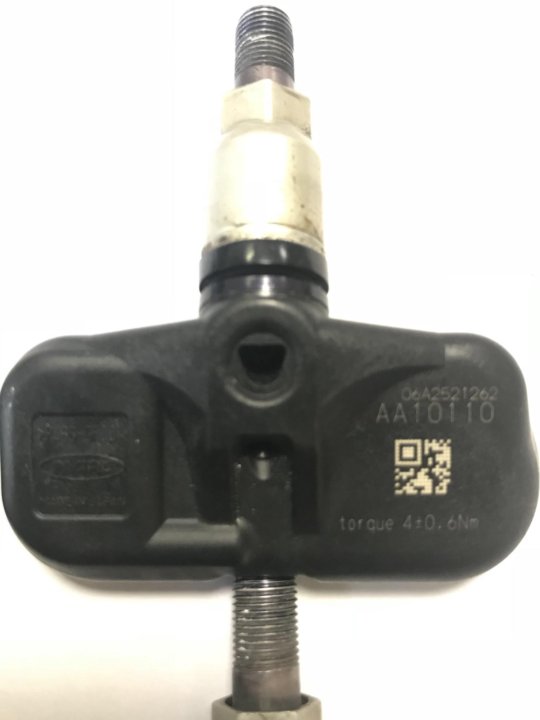
First, we will focus on the general approach to reset a tire sensor on a Lexus RX which, if it lights up, here are the basic simple steps:
 . In case this is not the case, we recommend that you go through the next section.
. In case this is not the case, we recommend that you go through the next section. Now that you have tried the normal method of removing the tire pressure sensor on the Lexus RX, and it didn't work, we'll move on to the second alternative, which is to have the tires on my Lexus RX well inflated and I still want that light to go away. Most likely, this means that you have Faulty tire pressure sensor. This will require to reset the value on your car's dashboard. However, be careful not to do this while driving as pressure fluctuations will affect your pressure sensors. Generally speaking, you need to go through the car configurations, then you should find the option to diagnose inflation or "deflation detection", once on this tab, you should hold the select button or reset button according to the year of your Lexus. RX until you see a message on the car console confirming that the reset has been taken into account (this usually takes a few seconds). You can now turn off the ignition and restart your Lexus RX to see if the tire pressure light has gone out.
RX until you see a message on the car console confirming that the reset has been taken into account (this usually takes a few seconds). You can now turn off the ignition and restart your Lexus RX to see if the tire pressure light has gone out.
If, despite your reset, the tire pressure indicator on your Lexus RX does not turn off, then the wisest solution is to go to the workshop, rather In total, it is tire pressure sensor on the valve that is faulty or faulty on your Lexus RX . Keep in mind that in general the unit price is around 120 euros. Another option that some people prefer to use because the problems may recur in some series is to disable the sensors with your carrier and diagnose your vehicle. However, this procedure is not recommended as it may result in improper handling and malfunction of your Lexus RX. Now you have all the keys in your hands to know how to reset the tire pressure sensor on the Lexus RX.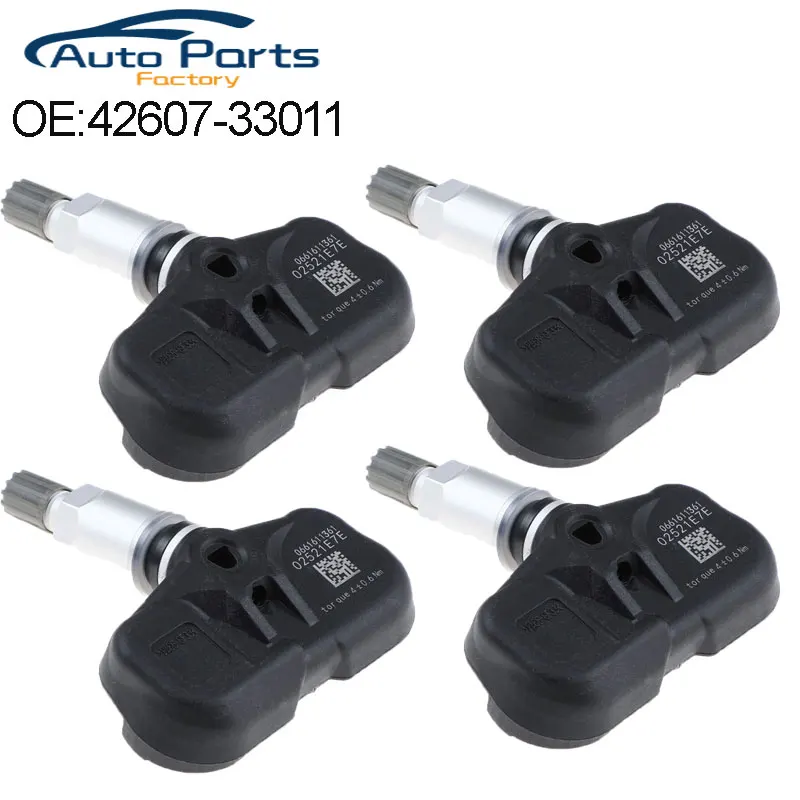
If you have any further questions about the Lexus RX, do not hesitate to contact us. Lexus RX category.
(
Updated:
26/09/2022
)
Content of article
For most passenger cars and SUVs, the standard tire pressure is 2.2 atmospheres. This is a universal indicator that provides comfortable movement in summer and winter, on dry and wet roads. However, for standard tires on the Lexus RX SUV and other models, the manufacturer recommends maintaining the front tire pressure at 2. 4 bar and the rear at 2.5 bar. These values are found on the nameplate, which is usually located near the filler neck, in the trunk near the spare tire, or by the driver's door. Also, the standard indicators of tire inflation are indicated in the manual for the vehicle.
4 bar and the rear at 2.5 bar. These values are found on the nameplate, which is usually located near the filler neck, in the trunk near the spare tire, or by the driver's door. Also, the standard indicators of tire inflation are indicated in the manual for the vehicle.
The level of pressure in the wheels for Lexus models RX, LX, EC or HX largely depends on the type of tires used, as well as the diameter of the wheels.
Consider the main types of car tires for Lexus:
 The vehicle must be equipped with directional stability and tire pressure monitoring systems. They are marked differently: ZP, RunOnFlat, SSR, ROF and other designations.
The vehicle must be equipped with directional stability and tire pressure monitoring systems. They are marked differently: ZP, RunOnFlat, SSR, ROF and other designations. Car tires, regardless of type, do not have maximum tightness. Therefore, the pressure naturally decreases by 0.1-0.2 bar per month. Such losses must be compensated by pumping up to the recommended values. Also, the air comes out faster from the old tire with frequent off-road driving, pits.
Below is a table of recommended wheel inflation values for Lexus RX, LX and other models, taking into account rim sizes, tire types and loads:
|
Disc diameter |
Tire type | Recommended Lexus tire pressure in bar for cold tires | |||
| Standard load (1-2 persons) | Full loading of the cabin (5 people) | ||||
| front | rear | front | rear | ||
| R16 | Standard | 2. | 2.2 | 2.3 | 2.6 |
| reinforced | 2.4 | 2.5 | 2.6 | 2.9 | |
| run flat | 2.2 | 2.3 | 2.4 | 2.7 | |
| R17 | Standard | 2.2 | 2.3 | 2.4 | 2.7 |
| Low profile | 2.3 | 2.4 | 2.5 | 2.8 | |
| reinforced | 2.5 | 2.6 | 2.7 | 3.0 | |
| run flat | 2. | 2.4 | 2.5 | 2.8 | |
| R18 | Standard | 2.2 | 2.3 | 2.4 | 2.7 |
| Low profile | 2.3 | 2.4 | 2.5 | 2.8 | |
| reinforced | 2.5 | 2.6 | 2.7 | 3.0 | |
| run flat | 2.3 | 2.4 | 2.5 | 2.8 | |
| R19 | Standard | 2.4 | 2.5 | 2.6 | 2.9 |
| Low profile | 2. | 2.6 | 2.7 | 3.0 | |
| reinforced | 2.7 | 2.8 | 2.9 | 3.2 | |
| run flat | 2.5 | 2.6 | 2.7 | 3.0 | |
| R20 | Low profile | 2.6 | 2.7 | 2.8 | 2.9 |
| reinforced | 2.8 | 2.9 | 3.0 | 3.1 | |
| run flat | 2.6 | 2.7 | 2.8 | 3.1 | |
| R21 | Low profile | 2. | 2.7 | 2.8 | 2.9 |
| reinforced | 2.8 | 2.9 | 3.0 | 3.1 | |
| run flat | 2.6 | 2.7 | 2.8 | 3.1 | |
Summer Drive Protection Run On Flat Sound Comfort
Rating:
4.5
Tires Goodyear Eagle F1 Asymmetric 5
Summer Drive protection
Rating:
5
Tires Goodyear Eagle F1 Asymmetric 6
Summer Drive protection
Rating:
4. 5
5
Tires Goodyear EfficientGrip 2 SUV
Winter Drive protection
Tires Goodyear UltraGrip Arctic 2 SUV
Winter Drive Protection Sound Comfort
Rating:
4.5
Tires Goodyear UltraGrip Ice 2
Winter Drive Protection Sound Comfort
Rating:
4.5
Tires Goodyear UltraGrip Ice SUV
Winter Drive protection
Tires Goodyear UltraGrip Performance+ SUV
All season Drive protection
Rating:
5
Tires Goodyear Vector 4Seasons Gen-3 SUV
Winter Drive Protection Sound Comfort
Rating:
4. 5
5
Tires Goodyear UltraGrip Ice Arctic
Winter Drive Protection Sound Comfort
Rating:
4.5
Tires Goodyear UltraGrip Ice Arctic SUV
Summer Drive protection
Rating:
5
Tires Goodyear Eagle Sport SUV TZ
Summer Drive protection
Rating:
4.5
Tires Goodyear EfficientGrip SUV
All season Drive protection
Rating:
4. 5
Tires Goodyear Vector 4Seasons SUV Gen-2
Winter Drive Protection Run On Flat
Rating:
4.5
Tires Goodyear UltraGrip Performance Gen-1
Depending on the type, diameter of the discs, as well as the load on the road wheels, Lexus tires are inflated in the summer from 2.1 to 3.1 bar. The exact distribution of values can be seen in the table above.
It is recommended to control inflation in Lexus only on cold/cooled wheels at an air temperature of +8… +15 degrees Celsius. Use a hand gauge to measure. It must be remembered that temperature changes (cooling / warming) affect pressure.